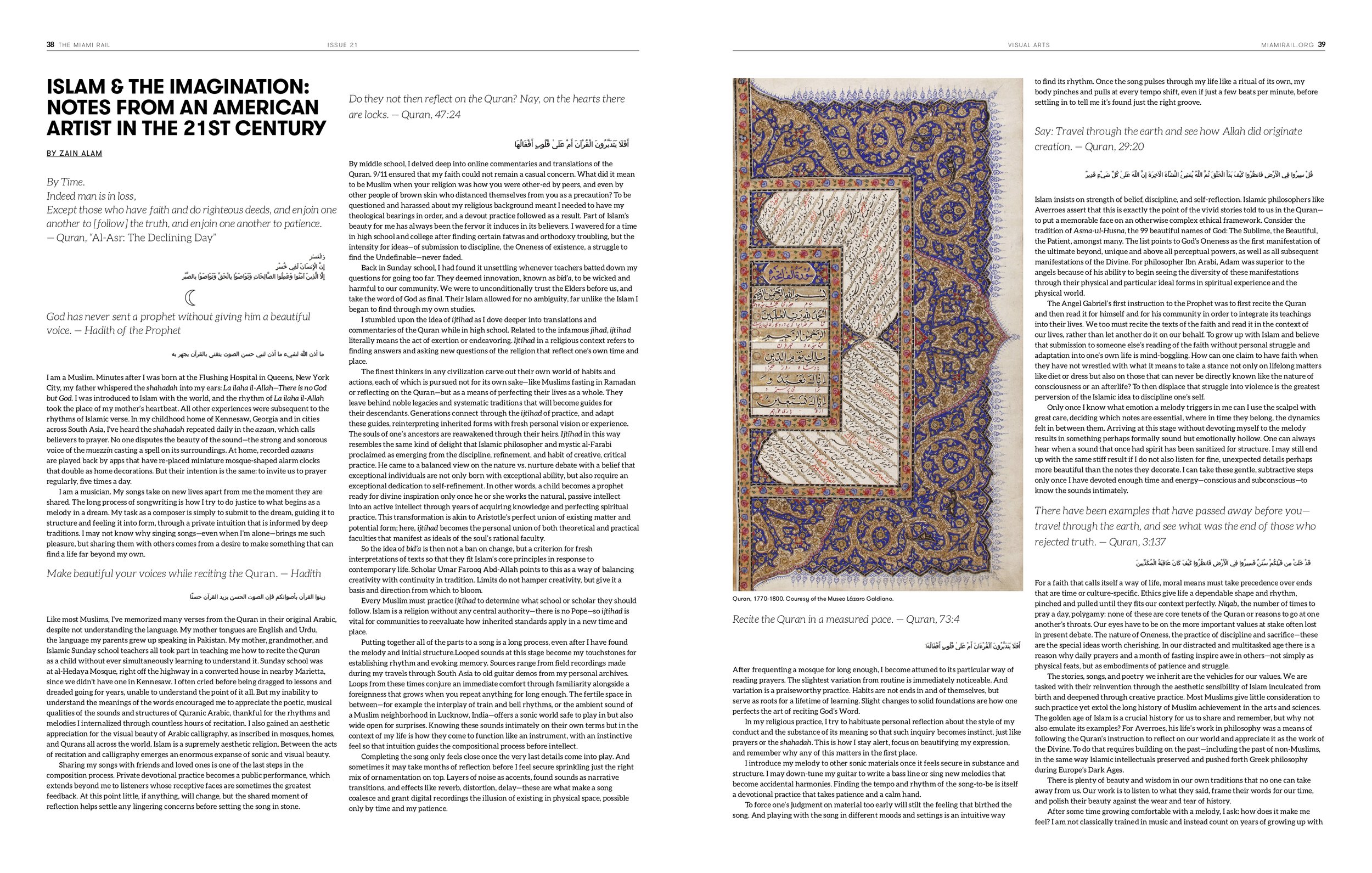ZAIN ALAM
2021 Culture Push Fellow, Fellowship for Utopian Practice
Zain Alam is an artist and musician of Indian-Pakistani origin based in Brooklyn, NY. Described as “a unique intersection, merging the cinematic formality of Bollywood and geometric repetition of Islamic art,” his recording project Humeysha began during his year working as an oral historian for the 1947 Partition Archive. His work is a project in translation using contemporary pop forms, found sound, and oral history.
Born in Queens, NYC and raised in Kennesaw, Georgia, Alam soundtracks a personal vocabulary that draws on Islamic art and South Asian culture. Field recordings of Pakistani cities; the distinct dialect of an ailing grandmother’s reminisces; quick rhythmic loops from favorite childhood Bollywood songs—all of these sounds find their way into Humeysha, regardless of their “musicality.” Postcolonial historians call such “fragments” the truest subject of today's world—a source of resistance to normalizing, systematic projects, by virtue of their specificity.
Alam’s practice extends his sonic vision into video, performance, and writing. His essays have been published in Miami Rail, Buzzfeed, and The New Yorker, and Humeysha has been covered by the New York Times, Vice, and Village Voice. Alam has recently completed fellowships with The Anderson Center, Marble House, and Harvard University. He is currently at work on a full-length album and the Bed-Stuy Faith Archive.
PROJECT: BED-STUY FAITH ARCHIVE
Bed-Stuy Faith Archive beckons toward the diversity of religious practice as embodied and inherited wisdom amongst believers working towards economic justice in the Brooklyn neighborhood. Chant, song, and story are shared as the spiritual technique which kept many going isolated and without congregation this past year.
What spiritual techniques are mutualist, consensus-based, and redistributive, evolving deep in the well of religious community? What can we learn from these age-old traditions, and how can we deploy their richness of image, metaphor, and narrative to refresh our own discourses of economic justice for a broader public?
The Archive aspires toward a kind of tactile snapshot of liturgy--age-old texts, prayers, and sayings that have served as a refrain for believers desiring some sense of belonging and foundation through crisis. We define liturgy here in its most capacious definition, including not simply “the holy texts,” but folk sayings, mystic fables, and musical accompaniment that have sprung up around the wells of belief.



